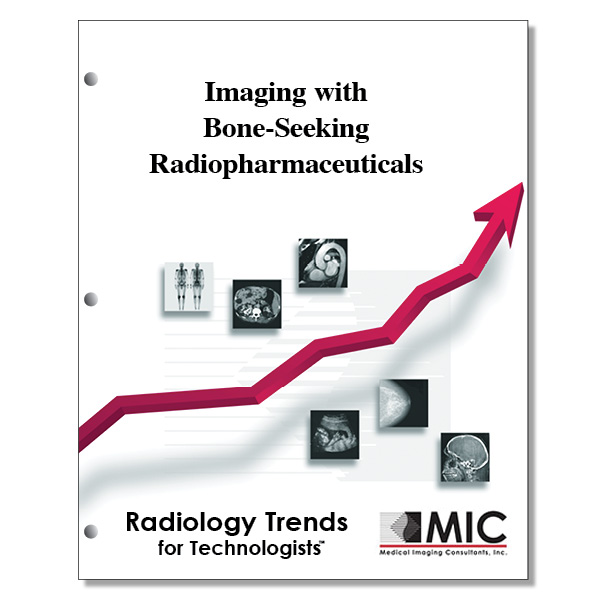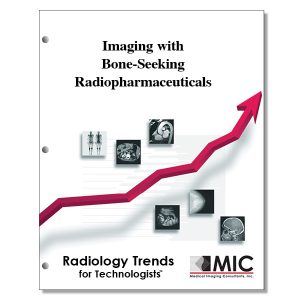

Imaging with Bone-Seeking Radiopharmaceuticals
A review of the performance and the mechanisms of uptake of bone-seeking radiotracers for clinical and research applications.
Course ID: Q00395 Category: Radiology Trends for Technologists Modalities: Nuclear Medicine, PET2.5 |
Satisfaction Guarantee |
$29.00
- Targeted CE
- Outline
- Objectives
Targeted CE per ARRT’s Discipline, Category, and Subcategory classification for enrollments starting after May 9, 2023:
[Note: Discipline-specific Targeted CE credits may be less than the total Category A credits approved for this course.]
Nuclear Medicine Technology: 2.50
Procedures: 2.50
Radionuclides and Radiopharmaceuticals: 1.25
Other Imaging Procedures: 1.25
Registered Radiologist Assistant: 1.25
Procedures: 1.25
Musculoskeletal and Endocrine Sections: 1.25
Outline
- Introduction
- Uptake Mechanisms of Bone-Seeking Radiopharmaceuticals
- Physiologic Mechanism of Radiopharmaceutical Uptake
- Radiotracer Delivery
- Radiotracer Localization to Bone
- Renal Excretion
- Environmental Factors
- Quantification Methods
- Dosimetry of 99mTc-MDP and 18F-NaF
- Clinical Applications
- Bone Viability
- Osteonecrosis and Avascular Necrosis
- Serial Bone Imaging at Multiple Time Points
- Pathophysiology of Bone Metastases
- Staging of Bone Metastases
- Therapeutic Response Evaluation
- Benign Metabolic Bone Disorders
- Bisphosphonate Treatment-Response Evaluation
- Conclusion
Objectives
Upon completion of this course, students will:
- be familiar with the FDA approval of 18F-NaF for clinical use
- understand what imaging modality has renewed interest in using 18F-NaF
- identify the characteristics of 18F-NaF bone scans
- identify the first radiotracer used for skeletal imaging in the clinical setting
- be familiar with the physical half-life of 89Sr
- be familiar with the introduction of the 99mTc-labeled bone radiotracers
- understand the process of positron emission
- be familiar with the acronym of SPECT
- be familiar with the composition of hydroxyapatite
- identify the radiopharmaceuticals used for performing a bone scan
- be familiar with protein binding of 99mTc-MDP
- identify the primary mechanism of binding of 99mTc-diphosponates
- be familiar with the substitutions for bone histomorphometry
- identify the primary route of elimination of bone radiotracers
- be familiar with the acquisition time of a dynamic PET
- be familiar with the standard adult radiotracer dose for an 18F-NaF bone scan
- be familiar with the minimal patient preparation for a bone scan
- understand the route of administration of the radiotracer for a bone scan
- understand the primary purpose of performing CT during a PET/CT scan
- be familiar with the definition of SUV
- understand the factors that determine the SUV values
- be familiar with the role that 18F-NaF bone scans have in studying allografts
- be familiar with how disseminated tumor cells invade bone tissue
- be familiar with the reported low sensitivity of bone scans for myeloma
- identify the advantages of using 18F-FDG for staging of lung cancer skeletal metastases
- identify the advantages of using 18F-NaF bone scans vs. 99mTc-diphosphonates
- be able to define Paget disease
- realize that 18F-NaF bone scans are useful for bisphosphonate treatment assessment
- identify the most common cancer affecting men in the U.S.
- identify the imaging tests that may be negative or indeterminate in men with biochemical failure
